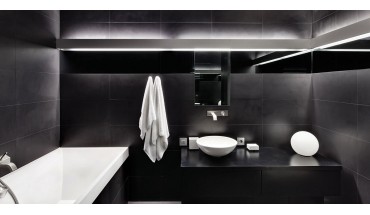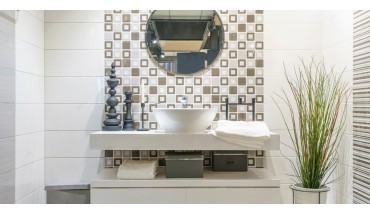
Nowadays we take the humble toilet for granted, but it wasn't until as recently as the early 20th century that many homes were even connected to a public sewer system.
Fast forward 100 years and the toilet is as much a statement of style and individuality as it a practicality.
Toilets come in an abundance of shapes, sizes and types, from the conventional close-coupled toilet to the more recent wall-mounted WC. With so many options it’s easy to get bogged down in the choice available, and the industry jargon used to describe them. So to help you make your choice, we've put together this buyers guide on toilet types.
Closed-Coupled Toilets
A closed-coupled toilet consists of two separate ceramic pieces - the pan and the cistern. The cistern is mounted directly on the top of the pan, and typically has a dual flush button on the top, or sometimes a lever handle.
Closed-coupled toilets are the most common toilet-type in the UK. They are available in a large number of styles and shapes, so let your personal style shine through when choosing yours.
They are usually the cheapest overall option in terms of purchasing and installation.
Features & Benefits:
• Often cheap to buy
• The quickest and cheapest option in terms of installation
• Huge choice of shapes and styles
• Soil pipe can usually go out and to the left, right, down or back

Back-to-Wall Toilets
Back to wall toilets are ideal for creating a modern and minimalist look. They have the cistern concealed in the wall or a piece of furniture to provide a neat finish and a clever way to maximise space in the bathroom or cloakroom. Some concealed cisterns measure 10cm or less in depth, so they overall depth used can be less than with a close-coupled toilet.
Access to the cistern - should you need to adjust or repair it - is either through an access panel if it is fitted within bathroom furniture, or via a flush plate if it is fitted in a wall. Either way, maintenance is usually no more difficult than with a standard toilet.
Features & Benefits:
• Offers a stylish, contemporary look without the cost of a wall-hung toilet
• Gives an illusion of space in a bathroom with less clutter
• Cheaper and easier to install than a wall-mounted toilet as no support frame is needed.
• Perfect for use with a run of furniture

Wall-Mounted Toilets
Wall mounted, or wall hung toilets, have the cistern hidden away inside a wall or furniture unit, with a chrome flush plate that provides access to the cistern.
The toilet is supported by a strong wall frame that houses the concealed cistern and supports the toilet. A wall-mounted toilet can usually be fitted to any wall, even a stud wall provided it is reinforced and supported correctly.
The mounting frames can typically support around 200kg in weight when properly installed, so you don’t need to worry about it falling off the wall when you sit down.
Features & Benefits:
• Creates the best illusion of space by leaving the floor free
• Looks super stylish - adds wow-factor to your bathroom
• Can usually support about 200kg of weight
• Space-saving
4.) Closed-Back Toilets
Closed-back toilets (sometimes called fully-enclosed toilets) are a type of close-coupled toilet that goes fully back to the wall to create a neat and tidy look. Bear in mind that you won’t be able to choose this type if you waste pipe exits to the left or right of the toilet.
Features & Benefits:
• Covers unsightly pipework
• Space saving
• Easy to keep clean
5.) Comfort Height Toilets
Comfort height toilets are 4 or 5cm taller than a regular toilet, designed to make it more comfortable for the user.
The extra height may not seem like a big difference, but for those that are slightly taller, elderly or infirm, it makes getting up and down from the toilet much easier, and a bathroom designed to accommodate your needs can make a huge difference.
Features & Benefits:
• High seating position
• Less pressure on the knees and other lower body joints
• Easy access for both the elderly and the less able
• Sitting down and getting up is made easier by the extra height


















